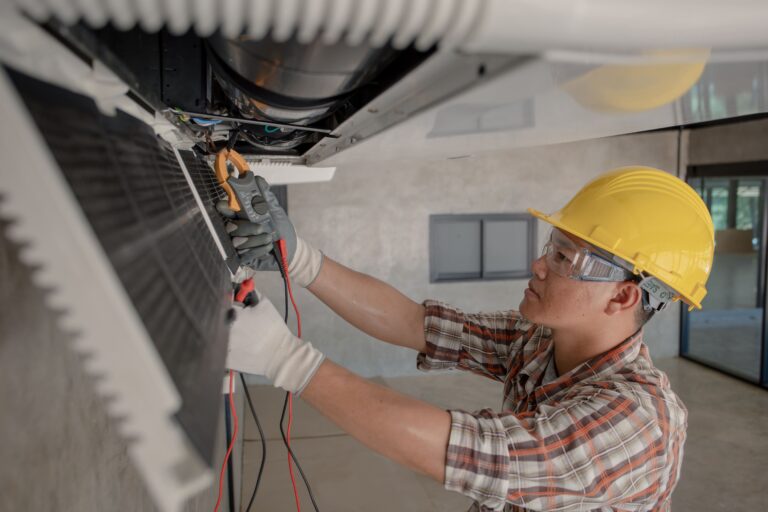The Debate: Green Roofs vs. Solar Panels
Effects of Skyrise Greenery on Building Performance
Half of humanity now lives in cities. The unstoppable force of urbanisation is consuming vast quantities of natural vegetation and forested area, replacing them with concrete buildings and hard surfaces. The resulting changes in the thermal properties of surfaces and the lack of evapotranspiration in urban areas lead to an increase in urban temperature, which in turn bring about an increase in energy consumption in buildings. With the objectives of introducing nature back into the city and exploiting the untapped spaces offered by buildings’ roofs and walls, a number of countries have started to adopt the skyrise greening concept in recent years.
This also serves to beautify the built environment. Skyrise greenery is broadly classified into rooftop gardens and vertical greenery systems. They are increasingly accepted as an appealing alternative in bringing greenery back to the highly urbanised city, due to the space constraints faced by most cities.
Benefits of Skyrise Greenery
Rooftop gardens and vertical greenery systems bring about quantitative benefits, in the form of financial returns, as well as qualitative paybacks, such as environmental, economical, aesthetic and social benefits. One of the most attractive benefits of skyrise greenery is the high aesthetic value that it can bring to buildings and its surrounding environment, softening the urbanized harsh surroundings and offering a tranquil and pleasant view to city dwellers.
Skyrise greenery can be used to create a living surface that actively contributes to the local environment. Allowing and encouraging plants to grow on roofs and up on walls equates to extending the natural environment into urban areas. Research shows that residents of neighbourhoods with substantial common green spaces are more likely to enjoy stronger social ties than those who live in an environment surrounded by barren concrete.
Furthermore, the environmental benefits of skyrise greenery are considerable. Additional vegetation cover reduces urban stormwater runoff by seven to 12 percent (Sanders 1986). Air pollutants in the urban environment could also end up being bound in the substrate of vegetation. At the same time, substrate, plants species and the trapped layer of air between plants and building facades act as insulation against machinery and traffic noises. The most significant benefit of skyrise greenery is undoubtedly its thermal effects. A facade fully covered by greenery is protected from intense solar radiation and can reflect or absorb between 40 percent and 80 percent of the radiation received, hence reducing the facade’s daily temperature fluctuation by as much as 50 percent (Stuttgart 2008, Dunnett 2008).
In another study, the shading effect of vertical greenery systems reduces the energy used for cooling, resulting in an eight percent reduction in annual energy consumption (Bass 2003). Furthermore, skyrise greenery was found to reduce air conditioning load by cooling the immediate outside air temperature of a building. A 5.5C reduction is expected to lower the amount of energy needed for air-conditioning by 50 to 70 percent (Peck 1999).
Thermal Effects of Skyrise Greenery In The Tropics
In a study to understand the thermal effect of rooftop gardens in Singapore, field measurements from the rooftop of a low-rise commercial building installed with an intensive rooftop garden were analysed. The findings showed that the maximum surface temperature of the bare roof could reach around 57C during a hot afternoon with a temperature variation of around 30C. For roof lined with PV cell, the PV cell can only utilize about 15 to 20% of the solar radiation, the rest will be converted to heat. Thus a roof lined with PV cell can be very hot resulting in the Urban Heat Island Effect. One solution is to install both green roofs and PV panels on a roof through an integrated design, by selecting plants that are tolerant of shady conditions under PV panels. Through this, the cooling effect provided by the green roofs can help to reduce unnecessary heat gain, which may also be important to reduce the temperature of the PV panels and thereby improve its efficiency.
The latter however, remains to be verified. However, with the installation of rooftop gardens, the maximum roof surface temperature was only 26.5C with a daily fluctuation of not more than 3C.
Energy simulations were also done on a five-story commercial building.
The results showed that covering an exposed roof fully with shrubs led to a 78.9 percent reduction in peak space cooling load.
Similarly, research conducted with various vertical greenery systems installed in Singapore verified the thermal benefits widely published worldwide. The temperature reduction of the wall surface is found to substantial, especially during the daytime when solar radiation is high.
A maximum record about 12C reduction was observed in the afternoon. Furthermore, there is only a minimal fluctuation of about 1C on the wall surface. In addition, the temperature of the substrate surface is much lower compared to the control wall, which was a blank wall without any vertical greenery system, by about 8C in the day and 6C at night.
Energy simulations were carried out on a hypothetical 10-storey glass facade building. The findings showed that having full vertical greenery system coverage on its facade reduces its mean radiant temperature from a maximum value of 45.72 C to 27.75C. In addition, there is a corresponding 31.75 percent reduction in energy consumption. This can be achieved since all direct solar radiation is shaded by the vertical greenery systems.
Conclusions
Vegetation can effectively reduce the energy consumptions required in buildings. Given the large roof and facade surfaces available for rooftop gardens and vertical greenery systems, there is enormous potential for urban greenery that remains untapped. It is with anticipation that skyrise greenery will eventually become a typical feature of the urban landscape.




